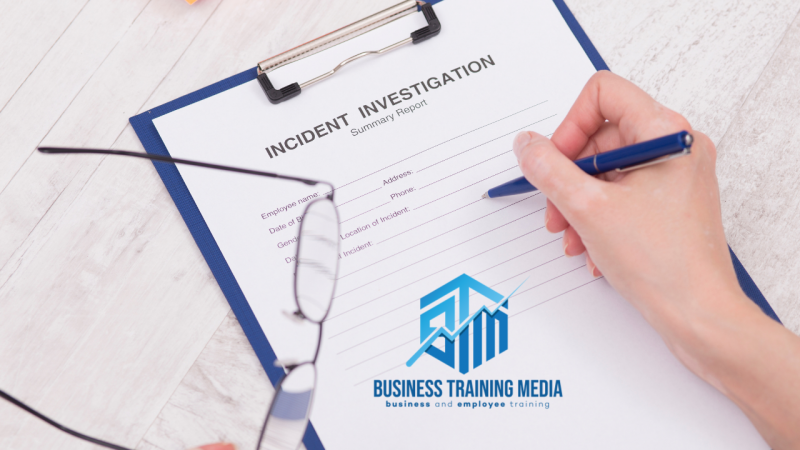
How to Conduct a Workplace Accident Investigation
By Business Training Media
Accidents can occur in any workplace, regardless of industry or size. When an accident happens, it is essential for employers to conduct a thorough investigation to determine the root causes and prevent future incidents. A workplace accident investigation involves gathering information, analyzing data, identifying hazards, and implementing corrective actions. In this article, we will provide a step-by-step guide on how to conduct a workplace accident investigation effectively.
1. Establishing an Investigation Team
The first step in conducting a workplace accident investigation is to establish a dedicated investigation team. This team should consist of individuals who possess relevant expertise, such as health and safety professionals, managers, supervisors, and employees familiar with the specific work processes involved. It is important to select team members who can objectively assess the incident without bias.
2. Securing the Accident Scene
Once the investigation team is formed, the accident scene should be secured and preserved to prevent any interference that could compromise the investigation. This involves ensuring the area is safe, cordoning it off if necessary, and preserving any physical evidence related to the accident. Photographs, video recordings, and measurements should be taken to document the scene.
3. Collecting Information and Evidence
Gathering accurate and comprehensive information is crucial for a successful investigation. The investigation team should interview witnesses, including the injured party, co-workers, and supervisors who were present during the accident. Written statements should be obtained, and any relevant documentation, such as incident reports, training records, and equipment manuals, should be collected. It is essential to document the time, date, location, and weather conditions during the incident.
4. Analyzing the Facts
Once all the necessary information and evidence are gathered, the investigation team must analyze the facts objectively. This involves identifying the sequence of events leading up to the accident, determining the immediate and underlying causes, and examining any contributing factors. Root cause analysis techniques such as the "5 Whys" or "Fishbone Diagram" can be useful in identifying the underlying causes.
5. Identifying Hazards and Risk Assessment
During the investigation, it is crucial to identify any hazards present in the workplace that may have contributed to the accident. This can involve conducting a thorough risk assessment to determine potential risks associated with the tasks performed, the environment, equipment, and human factors. The team should evaluate whether existing control measures are adequate or if additional safeguards are necessary to prevent similar accidents in the future.
6. Reporting and Documentation
A comprehensive report should be prepared to document the findings of the investigation. The report should include a summary of the incident, the sequence of events, the root causes identified, and recommended corrective actions. It is important to prioritize corrective actions based on their effectiveness and feasibility. The report should be shared with relevant stakeholders, including management, employees, and regulatory authorities, as required.
7. Implementing Corrective Actions
The investigation's success lies in implementing the recommended corrective actions to prevent similar accidents from occurring in the future. The investigation team, in collaboration with management, should develop an action plan outlining the necessary steps, responsibilities, and timelines for implementing the identified controls. Regular follow-ups and monitoring should be conducted to ensure the effectiveness of the corrective measures.
8. Learning and Continuous Improvement
Workplace accidents provide valuable lessons that can be used to improve safety procedures and prevent future incidents. It is essential to foster a culture of learning and continuous improvement within the organization. The investigation team should conduct regular reviews of accidents, near misses, and hazard reports to identify trends and take proactive measures to mitigate risks.
Conducting a workplace accident investigation is a critical step in maintaining a safe and healthy work environment. By following a structured and systematic approach, employers can identify the root causes of accidents, implement appropriate corrective actions, and prevent similar incidents in the future. A thorough investigation not only protects the well-being of employees but also demonstrates a commitment to safety and compliance. Remember, prevention is always better than dealing with the aftermath of an accident.
Copyright 2023 - Business Training Media
Join Our Free HR Training Solutions eNewletter
Join our free HR Training Solutions eNewsletter today to stay up-to-date on the latest industry trends, training and development programs, best practices, and expert insights. Gain valuable knowledge, enhance your skills, improve your organization, build productive teams and elevate your career. Don't miss out on this invaluable resource – sign up now for our free HR Training Solutions eNewsletter!

Accident Investigation Safety Training
Our "Accident Investigation" training program show employees steps that are taken in an accident investigation, and highlight how important it is for employees to fully cooperate with any inquiry




